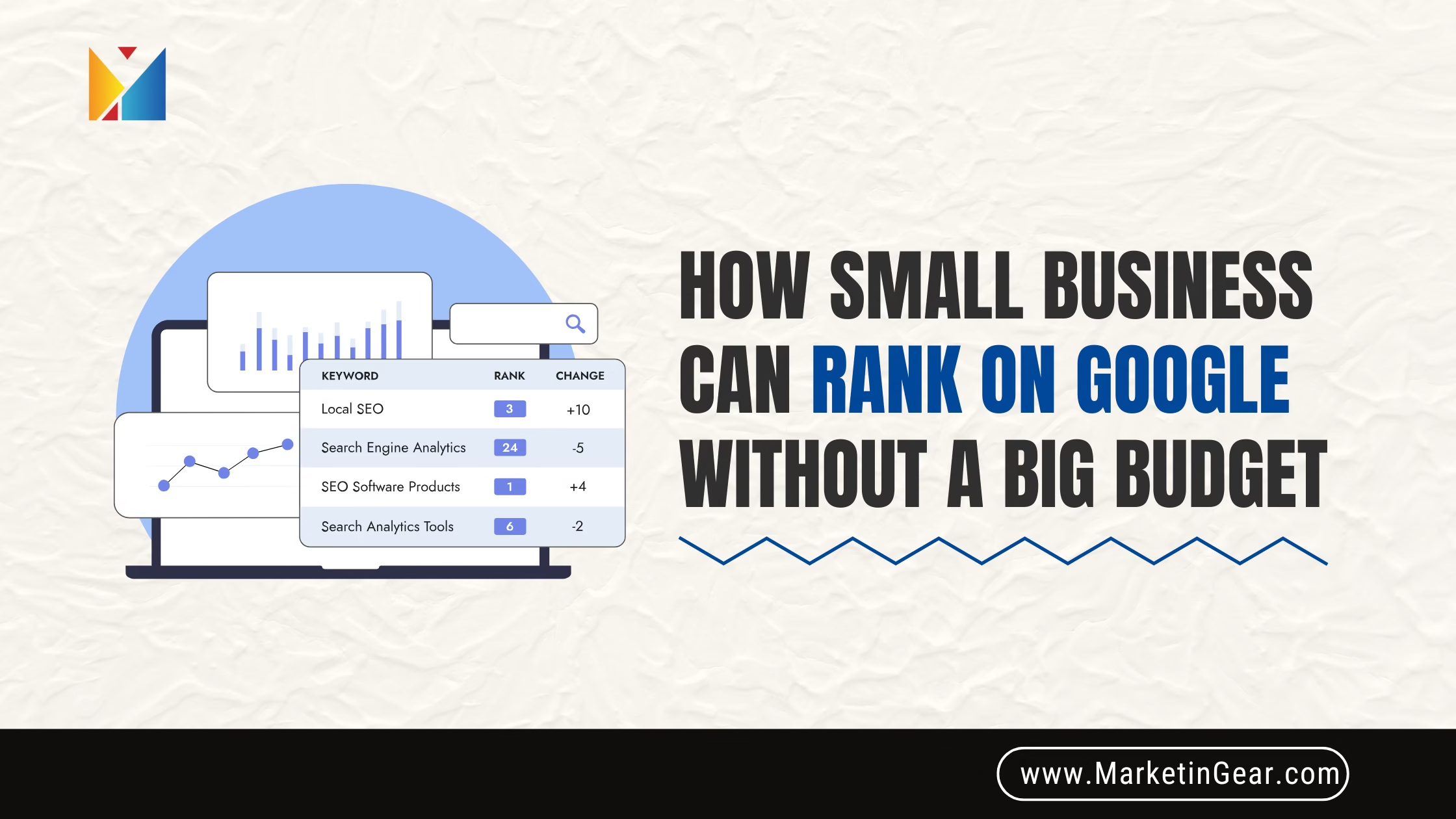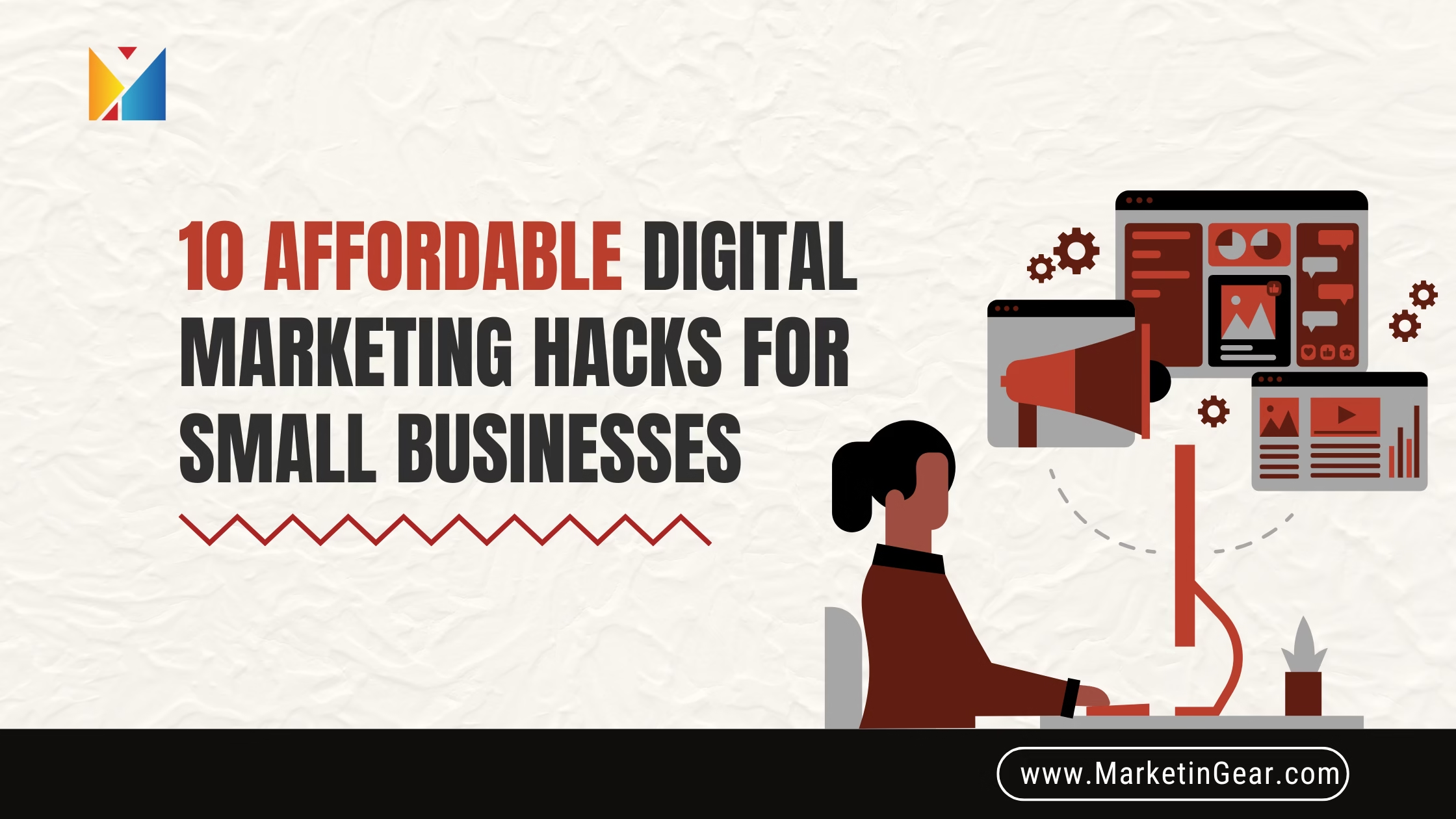Introduction: You Don’t Need a Fat Wallet to Show Up on Google
Let’s face it—when you’re running a small business, every penny counts. You want people to find your shop, your bakery, or your service online, but you keep hearing that ranking on Google is expensive or complicated. Here’s the truth: you don’t need a pile of cash or fancy tools to get seen. With a bit of know-how, some smart moves, and a sprinkle of consistency, you can climb those search rankings and get the attention you deserve.
This guide is your step-by-step playbook. You’ll learn what really works for businesses on a budget, discover free or low-cost tools, and walk away with a game plan you can start today.
1. Affordable SEO Strategies That Really Work
Start With What You Already Have
Most small businesses don’t realize they already have the foundation for great SEO: their website, their story, and their community. Start by making sure your site has clear info about what you offer, who you are, and how customers can reach you.
Budget-Friendly Keyword Research
Big brands pay thousands for keyword tools, but you don’t need to. Use Google’s own tools (like Google Search Console and Google Keyword Planner) to find out what your customers are searching for. Look for long-tail keywords—these are longer, specific search phrases like “best pizza place in Sacramento” instead of just “pizza.” They’re easier to rank for and often lead to more sales.
DIY Tip: Type your main service into Google and see what suggestions pop up. These are real things people search for!
Free SEO Tools for Small Businesses
Don’t spend money on tools before you need to. Here are some great ones that won’t cost you a thing:
- Google Search Console: Shows how your site appears in search, and flags problems.
- Google Analytics: Helps you track visitors and see what’s working.
- Ubersuggest: Limited free searches for keyword ideas.
- Answer the Public: Visualizes what people are asking online about your topic.
2. Local SEO: Be the Star in Your Neighborhood
If you’re a local business, you need to show up when someone nearby searches for your service. This isn’t just about ranking—it’s about getting chosen.
Google My Business Optimization
Set up (or claim) your Google My Business (GMB) listing. Add real photos, your hours, and a detailed description of your services. Keep everything up-to-date.
Local Listings Management
Get your business listed on Yelp, Bing Places, Apple Maps, and Facebook. The more places you show up (with the same name, address, and phone number), the more Google trusts you.
NAP Consistency Tips
NAP means Name, Address, Phone Number. Make sure these details are exactly the same everywhere online. Even a small difference (like “St.” vs “Street”) can cause confusion and hurt your ranking.
Local Reviews and Reputation
Ask happy customers to leave you a Google review. Don’t be shy—a friendly ask after a sale, or a follow-up email, can go a long way. Respond to reviews, too, even if they’re not all five stars. It shows you care.
3. On-Page SEO Techniques: Tweak What You Own
You don’t need a developer for the basics. A few simple changes to your site can make a big difference.
Title Tag Optimization
Every page should have a clear, unique title that includes your main keyword. For example, “Affordable Dog Grooming in Sacramento | Furry Friends Spa.”
Meta Description Tips
Write a short, punchy summary for each page (under 160 characters) that tells people what they’ll find. Think of it as your shop window—make it inviting.
Header Tag Usage
Break up your content with headings (H1, H2, H3). This helps readers and Google both.
Internal Linking Best Practices
Link from one page on your site to another where it makes sense. For example, your “About” page can link to your “Services” page. It keeps people exploring and signals to Google what’s important.
Image Optimization for SEO
Rename your image files to describe what’s in the photo (“sacramento-pizza.jpg” not “IMG_1234.jpg”) and add descriptive alt text. This helps Google—and people using screen readers—understand your site better.
4. Content Marketing on a Budget
Content is still king, but you don’t need to write novels or hire an agency. Small, regular updates go a long way.
Blog Post Ideas for Small Business
Write about:
- How-to guides for your products
- Common customer questions
- Local news or events in your community
- Behind-the-scenes stories
Repurposing Content
Turn a customer testimonial into a case study, or share snippets from your blog on social media. Squeeze every drop out of what you create!
User-Generated Content
Ask customers to tag you in their photos or share reviews on Instagram or Facebook. Share these (with permission). Real stories from real people build trust.
Content Promotion Without Spending
Share your posts on social media, email newsletters, or in community groups. Join Facebook groups related to your business and participate (don’t just drop your link—be helpful).
5. Link Building Without Spending Money
Backlinks are votes of confidence from other sites. Here’s how to get them for free:
Earning Backlinks Organically
Create helpful resources, answer questions in your industry, or offer tips in local online forums. Sometimes, just reaching out with a helpful suggestion can earn you a mention.
Guest Posting for Small Businesses
Offer to write a guest post for a local blog or business. They get free content, you get a link and some exposure.
Partnership and Collaboration Links
Partner with other local businesses—host events, support each other on social, or write about each other. Everyone wins, and Google notices these connections.
6. Technical SEO Essentials (That Anyone Can Do)
Website Speed Optimization
A slow website sends visitors running. Use PageSpeed Insights (by Google) to check your speed and follow the suggestions to improve it. Compress images, limit fancy animations, and keep things clean.
Mobile-Friendly Site Tips
Most people browse on their phones. Make sure your site looks good and works smoothly on mobile devices. Try loading it yourself—if you have to pinch and zoom, it needs work.
Fixing Broken Links
Check your site for broken links (links that don’t go anywhere). Tools like Broken Link Checker make this easy. Fix or remove any dead links.
Basic Schema Markup
Schema is a bit of code that helps Google understand your business info. Use free generators online to add basic schema for your business type.
7. Social Media for SEO
Social media helps more than you think—it can drive real traffic and boost your authority.
Leveraging Social Media Profiles
Keep your profiles up to date with your current website, hours, and contact info. Use the same NAP details everywhere.
Driving Traffic from Social
Share your blogs, special offers, or behind-the-scenes moments. Use hashtags to get discovered by new audiences.
Best Platforms for Small Business
Don’t spread yourself too thin. Pick one or two platforms where your customers hang out—like Facebook and Instagram—and focus your energy there.
8. Tracking SEO Success
Measuring Organic Traffic
Use Google Analytics to see how many people are visiting your site from Google. Watch for trends—are you growing month over month?
Free Analytics Tools
Stick to Google Analytics and Search Console to start. Both are free and powerful.
Setting SEO Goals for Small Business
Don’t get lost in the numbers. Set simple goals, like “rank on page one for [main keyword],” “get 10 Google reviews this month,” or “publish one blog post per week.” Celebrate every win!
Conclusion: Your Next Step to Google Rankings (Without Breaking the Bank)
Ranking on Google is possible for every small business. You don’t need big bucks—just a bit of time, some basic tools, and a willingness to keep at it. The best part? Every step you take adds up. In a year, you’ll be amazed at how far you’ve come.
If you want personalized help, a custom SEO plan, or someone to handle the heavy lifting for you, MarketinGear is here to help. We believe every business—big or small—deserves to shine online.
Ready to get noticed? Contact MarketinGear today for your free SEO check-up and start climbing those Google rankings.




